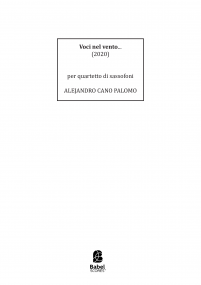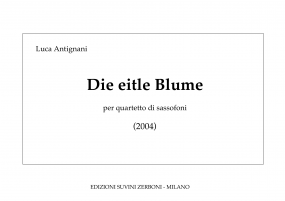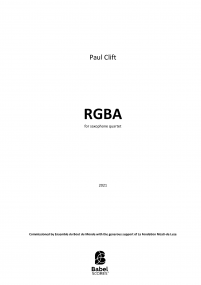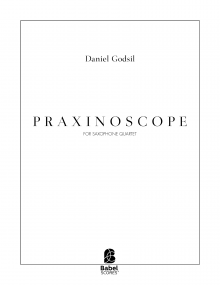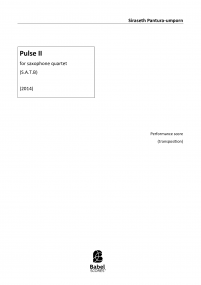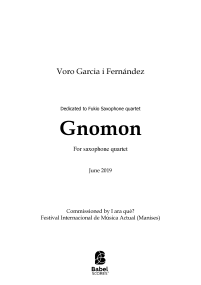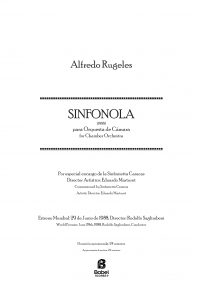La Caverne des Idées
Saxophone Quartet.
9,00 €
Versión digital (+0,00 €) para descarga
Versión impresa (+14,80 € impresión y envío). Colissimo7-14 days aprox.
Al comprar una partitura, usted puede contactar al compositor aquí mismo!
Especificaciones
Region
Europe
Estimated Duration
6 - 10min
Date
2011
ISMN : 979-0-2325-0863-4
Descripción
commissioned by CoMA for Stockholm Saxophone Quartet.
The title of the piece means The Cave of Ideas. It is inspired by the Allegory of the Cave also known as Plato’s Cave, which was used by the Greek philosopher Plato in his work The Republic as an attempt to illustrate the nature of reality. The allegory is written as a fictional dialogue between Plato's teacher Socrates and Plato's brother Glaucon. In the dialogue, Socrates describes a group of people who have lived chained to the wall of a cave all of their lives, facing a blank wall. The people watch shadows projected on the wall by things passing in front of a fire behind them, and begin to ascribe forms to these shadows. According to Socrates, the shadows are as close as the prisoners get to viewing reality. He then explains how the philosopher is like a prisoner who is freed from the cave and comes to understand that the shadows on the wall do not make up reality at all, as he can perceive the true form of reality rather than the mere shadows seen by the prisoners. The Allegory is related to Plato's Theory of Forms, according to which the "Forms" (or "Ideas"), and not the material world of change known to us through sensation, possess the highest and most fundamental kind of reality.
Add to list
- Login to create your own lists
commissioned by CoMA for Stockholm Saxophone Quartet.
The title of the piece means The Cave of Ideas. It is inspired by the Allegory of the Cave also known as Plato’s Cave, which was used by the Greek philosopher Plato in his work The Republic as an attempt to illustrate the nature of reality. The allegory is written as a fictional dialogue between Plato's teacher Socrates and Plato's brother Glaucon. In the dialogue, Socrates describes a group of people who have lived chained to the wall of a cave all of their lives, facing a blank wall. The people watch shadows projected on the wall by things passing in front of a fire behind them, and begin to ascribe forms to these shadows. According to Socrates, the shadows are as close as the prisoners get to viewing reality. He then explains how the philosopher is like a prisoner who is freed from the cave and comes to understand that the shadows on the wall do not make up reality at all, as he can perceive the true form of reality rather than the mere shadows seen by the prisoners. The Allegory is related to Plato's Theory of Forms, according to which the "Forms" (or "Ideas"), and not the material world of change known to us through sensation, possess the highest and most fundamental kind of reality.
Instrumentation
Saxophones (4)
Recording
span style="line-height- 1.3em;"Stockholm Saxophone Quartet</span<br>"
Score Details
Format - A4 / US Letter
Pages - 20
Pages - 20





